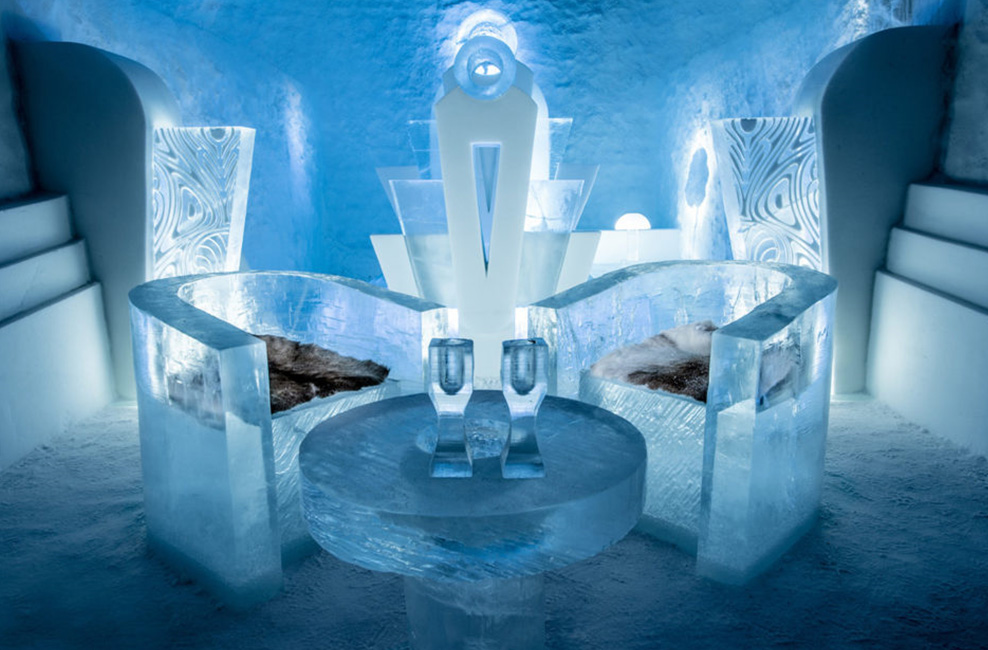Igloos are probably the most well-known form of ice architecture, providing an unexpectedly warm home in an area where few other building materials are available. To show what can be achieved with snow and ice, a group of students built the tallest ice tower ever constructed.
The original Icehotel is rebuilt each year with snow and ice in the village of Jukkasjärvi, in northern Sweden. At an ice exhibition one night in 1990 no rooms were available in town so some visitors asked to sleep in the igloo at the exhibition. Since then an ice hotel has been rebuilt each year from December to April and includes all the furniture, even the chairs and beds. There is a bar with glasses made of ice and an ice chapel popular for weddings. Each ‘hotel’ suite is unique as the architecture of the hotel is changed each year.
On 16 December 2017, the 35 unique deluxe suites; bar, chapel and ice gallery was finished. Over 70 artists, designers, and architects from 15 countries helped to create this year’s version of the hotel. The amount of snow used to create the hotel’s rooms would make 700 million snowballs! For the chandeliers in the main hall 1,000 handmade ice crystals were used. Only part of the hotel is permanent, called Icehotel 365; the rest will melt in spring. The ice palace featured in the Bond movie Die another Day was inspired by the Icehotel in Jukkasjärvi. You could say “Its’ an ice place to visit.”
Taking inspiration from the Icehotel in Sweden, last year a group of Dutch, Flemish, and Chinese students built the tallest ice tower ever built. Made from fibre-reinforced ice, the tower opened mid-January this year at the Harbin International Ice and Snow Sculpture Festival, an annual winter festival that takes place in China. Named the Flamenco Ice Tower due to the shape of the tower based on traditional Chinese towers and a flamenco dress, it is the tallest self-supporting ice construction, improving their own record from 21 to 30 metres.
To make the construction stronger, the ice is mixed with cellulose. The composite material is a reliable building material and is strong even at thicknesses of only 3-5 centimetres. The design consists of a 30-metre high vertical tube with 6 entrances. To enter the centre of the tower the audience has to climb one of the six staircases made of transparent solid ice blocks. The ice blocks in the staircases are illuminated similar to most of the solid ice structures in the ice festival. The aim of the project is to promote the composite material, which is completely renewable as a solution for temporary constructions in cold areas, including Mars missions.

